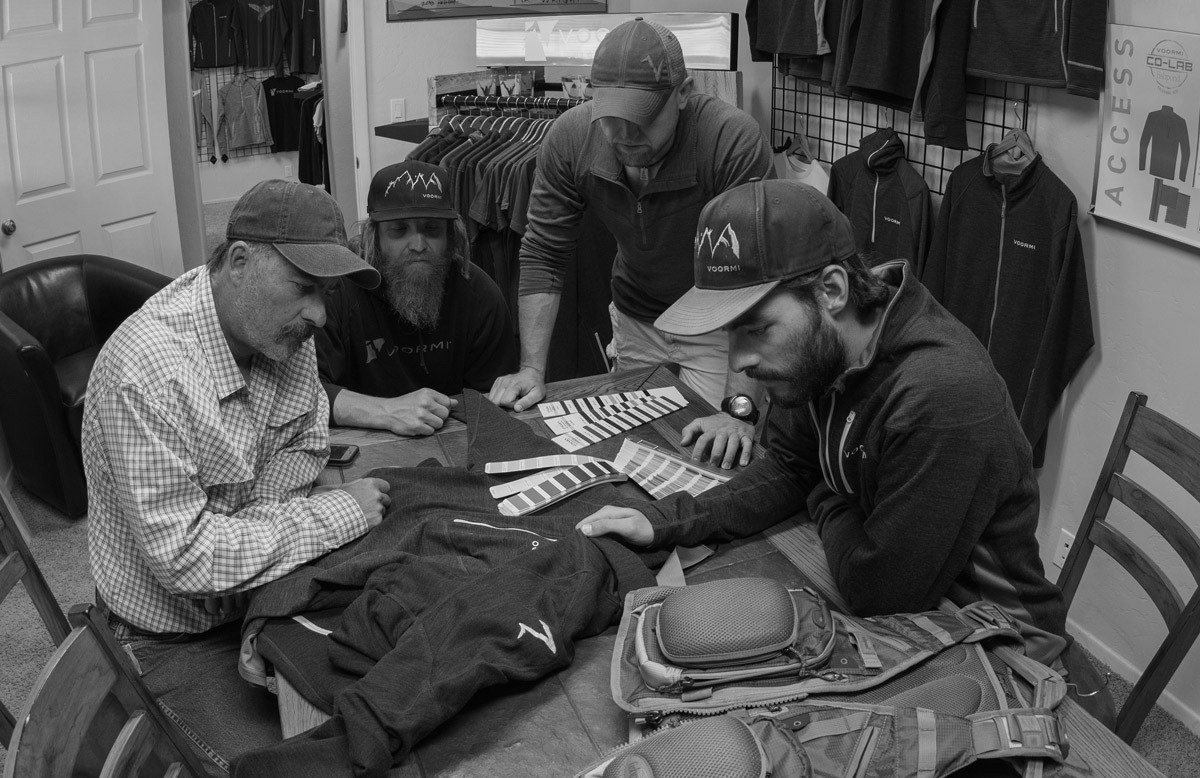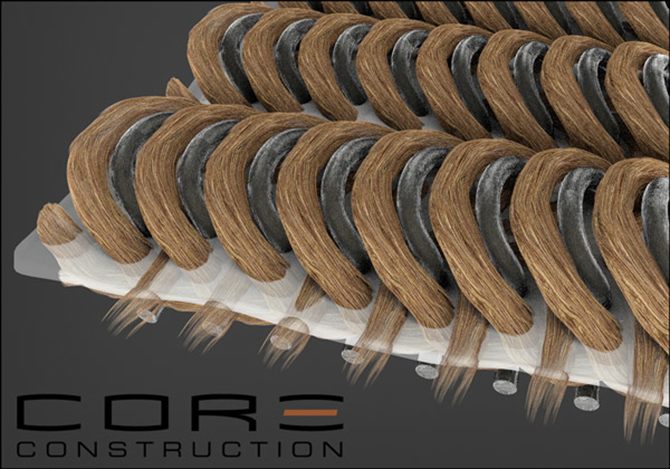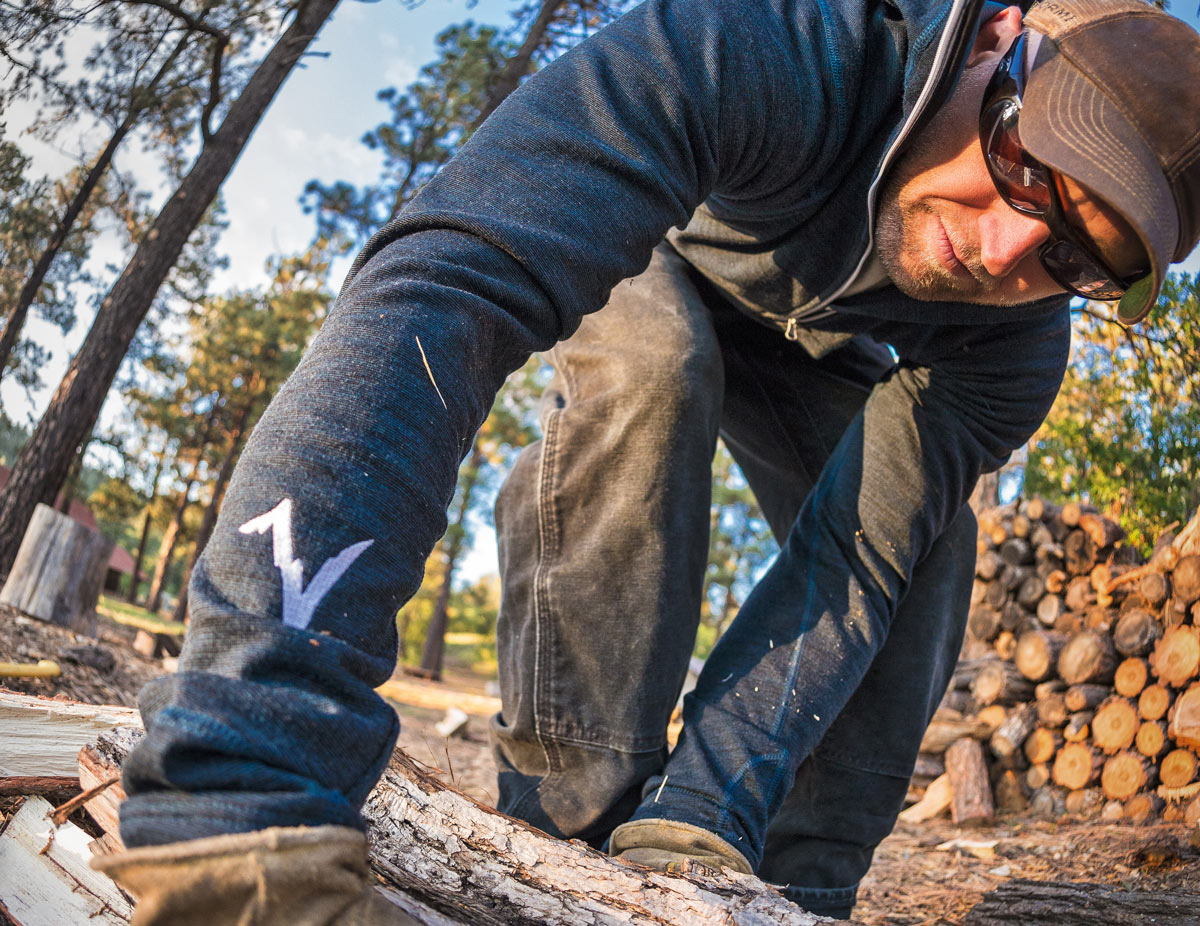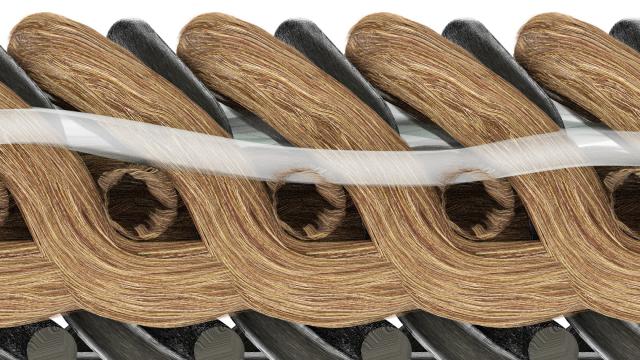For nearly 50 years, Gore-Tex has defined rainwear. But now, thanks to an innovative new process that builds water resistance straight into any item of clothing, Voormi is aiming to end that domination. Here’s how their technology works.
Voormi’s “Core Construction” isn’t a new material or even a new type of rain jacket. It’s a new production process that allows the Colorado-based startup to weave a technical membrane straight into the fabric of a one-layer item of clothing. Imagine your favourite flannel shirt, with the same soft hand and the same drape, just waterproof. Or, a pair of merino wool long johns that are just as comfortable and just as breathable, only windproof. It’s the ability to add the technical merits of membranes to existing garments that Voormi is hoping will be its killer app.
As we learned in yesterday’s article about the history of rainwear, it’s the ability to stop rain and wind while still allowing heat and sweat vapor to escape that has defined Gore-Tex’s domination of performance apparel for the outdoors. Its big innovation was a porous membrane sandwiched between inner and outer fabrics — called three-layer construction — and, while the size of the pores in the membrane and therefore its technical attributes can be specifically tailored to a variety of jobs, that three-layer design has yet to be bettered.
We spoke with Voormi’s Timm Smith, who has a background in chemical engineering and performance textiles from his 12-year career at Gore and Associates, where he worked on new product development and brand management on the Gore-Tex team.
IndefinitelyWild: What prevents moisture from travelling in and out of the membrane through the fibres?
Timm Smith: First, we apply a DWR treatment that prevents wicking. Second, the degree to which we post-process the fabric to re-seal the holes.
IW: How are the fibres sealed in the membrane given that they won’t be 100 per cent uniform in thickness?
TS: That’s all part of the interaction between yarn selection, fabric construction, and processing. That’s why each application of Core Construction is its own development project.

IW: Can Core Construction create an item of clothing that has objective performance benefits over three-layer? i.e. More breathable, more waterproof, lighter weight?
TS: The primary benefits of Core Construction over traditional three-layer lamination have to do with softness, hand, drape and the ability to very surgically dial in the delicate balance of air permeability and weather protection.
Out of the gate, we’ve been focussed on creating the kind of garment that you want to wake up and put on every day, with the comfort of a fleece and the protection of a soft shell or better. Something that covers 90 per cent of the weather conditions you’re going to encounter.
You couldn’t do this with a three-layer because 1) the glue that bonds all of the layers together adds stiffness and inhibits breathability, and 2) it is hard to dial in airflow at any meaningful level. Conversely, we don’t use any glue and we can very tightly control the permeability of the construction throughout our process.
This is as we understand it today because we believe we have only really explored the tip of the iceberg when it comes to the technology. Much like the advent of lamination [three-layer] spawned the invention of more membrane/textile combinations than one can count, we believe Core Construction is a platform for things we can’t even see today. Consider that if you have N functional cores (membranes, insulation battings etc) that can be combined with N fibres and yarns (nylon, poly, wool, Nomex etc) with N degrees to which we can establish permeability, then the number of permutations is virtually endless.
IW: What price premium will Core Construction carry over a traditional mid layer?
TS: It’s hard to make a one-to-one comparison as style details will not match exactly. That said, our current Access (a merino pullover that can function as an outer layer) is $US199 and the Access Hydro (the same, but waterproof) is slotted for $US299. The current Drift Jacket is $US249 and the Drift Hydro is slotted for $US399. So roughly a $US100 to $US200 premium.

IW: In addition to Core Construction, I’m seeing technologies like “Dual-Core,” “Core,” and “Surface Hardened” mentioned. Can you explain what those are?
TS: They’re all based on leveraging the benefits of wool on the outside in highly technical applications. Elsewhere, wool is primarily used inside, for socks and underwear. Through a process we call “Precision Blending,” we introduce high performance synthetic yarns into the weave with the wool yarn, which avoids blending the two materials in a single yarn, which can cut the performance of wool down.
Dual Surface Precision Blended Wool is the foundation we use for our base layer series. It is built from a 19.5 micron merino wool base, on which we float a razor thin layer of high performance wicking yarns on the inside surface to accelerate the movement of sweat off the skin.
Surface Hardened Thermal Wool is the foundation of our thermal mid-layer series and is built from a 21.5 micron merino base. We again float a layer of wicking yarns on the inside surface like we do in our base layers, however in this construction we fleece those fibres to make it more thermal. Then, on the outside surface we float and interlace nylon fibres for abrasion resistance and strength. We then treat that outside surface with a Durable Water Repellant to shed water. The idea here is that with the extra abrasion resistance of the nylon this can be the outmost layer you wear in dry to slightly drizzly or snowy conditions.
Surface Hardened Woven Wool is the foundation of our waterproof shell portfolio. Here we weave (vs. knit) 21.5 micron merino with nylon and spandex to create a burly four-way stretch woven textile. This is then DWR treated and laminated to a waterproof membrane and then laminated to our Dual Surface wool to create our own three-layer waterproof laminate suitable for mountain professional users like patrollers, guides etc.

IW: What kind of membranes can be used? Existing ones like, say eVent or only your own proprietary stuff?
TS: Really, the sky is the limit. We have explored a multitude of cores, from commercially available options to proprietary ones. We’ve even explored the concept of building functional composites outside of the apparel market.
IW: Will Core Construction garments only be sold by Voormi or will the technology be licensed to third party brands in the same way Gore-Tex has?
TS: Out of the gate, we’re focused on leveraging the technology to build out the Voormi collection. That said, we have structured our business in such a way that allows us to collaborate with other like-minded companies.
IW: When will your stuff be available to consumers?
TS: Latest would be late 2015, but we may drop something sooner.
We’ll be testing Voormi’s products over the coming months and look forward to seeing if they work as promised. Early signs are very promising.
